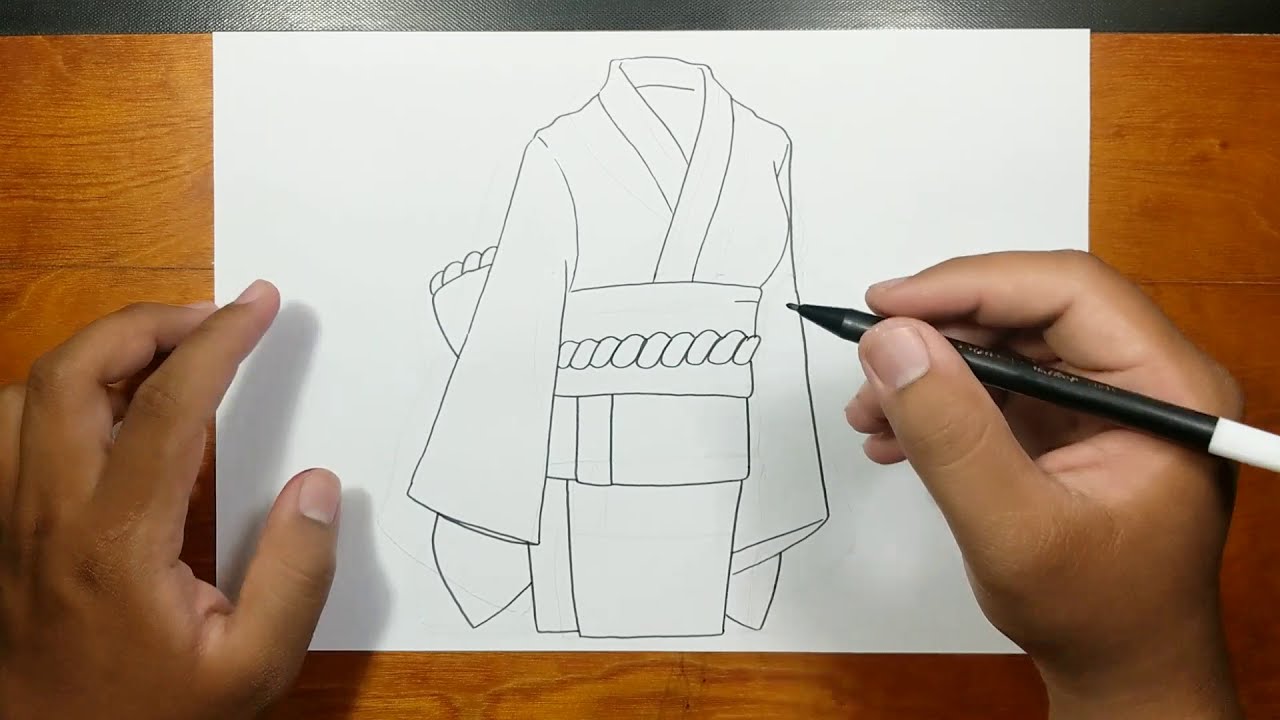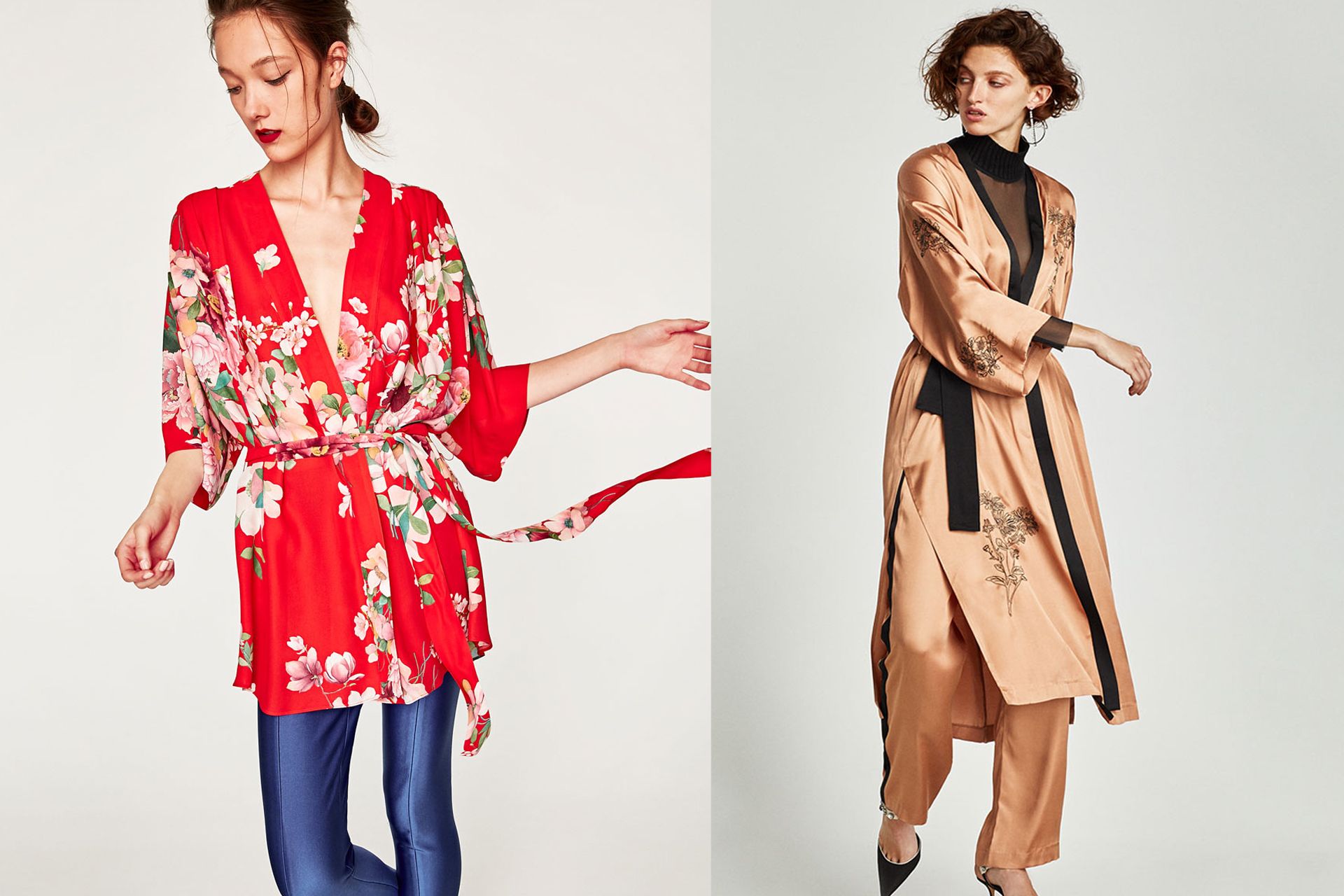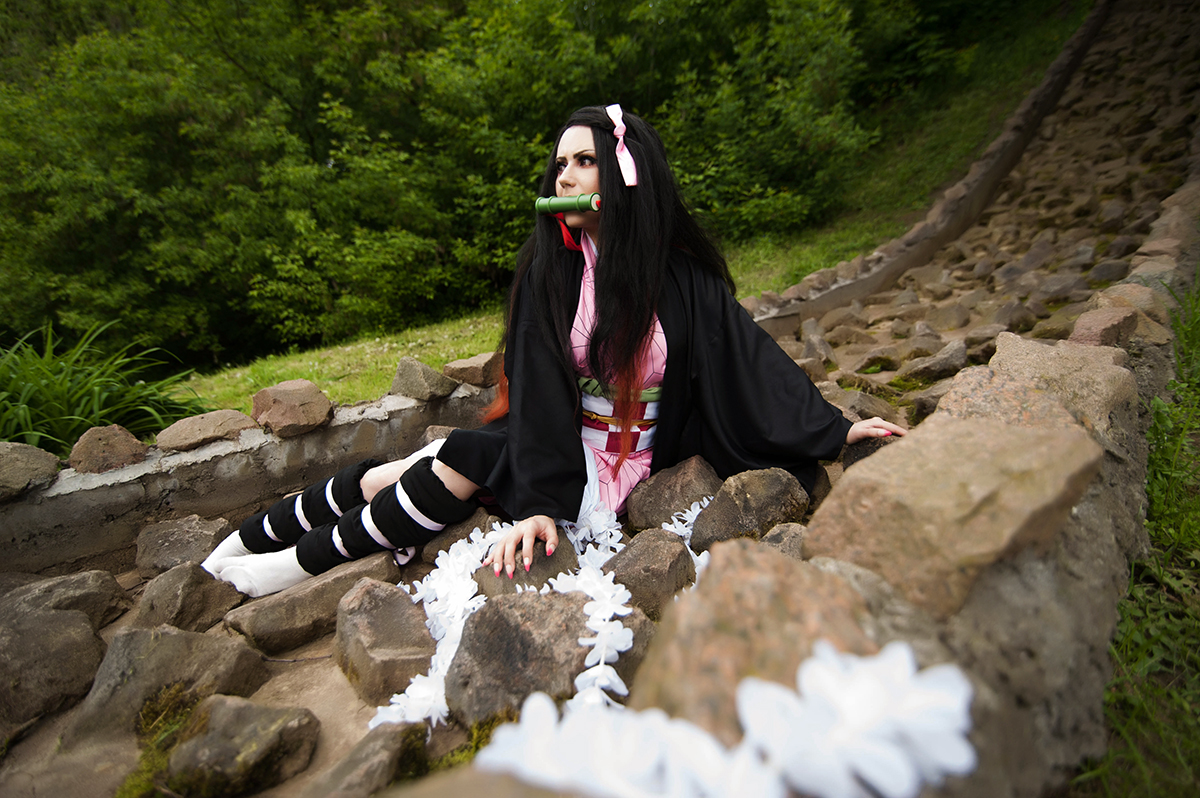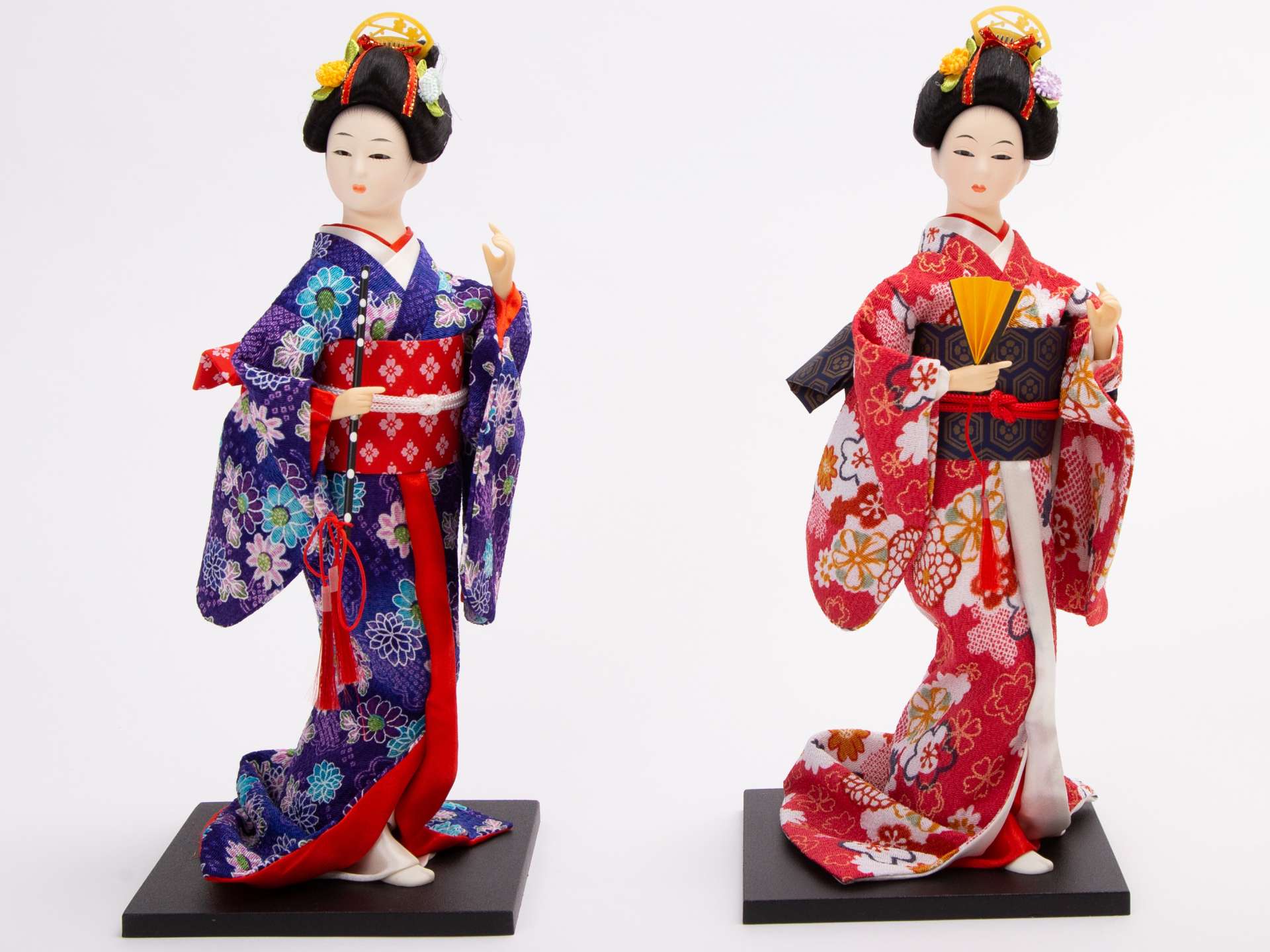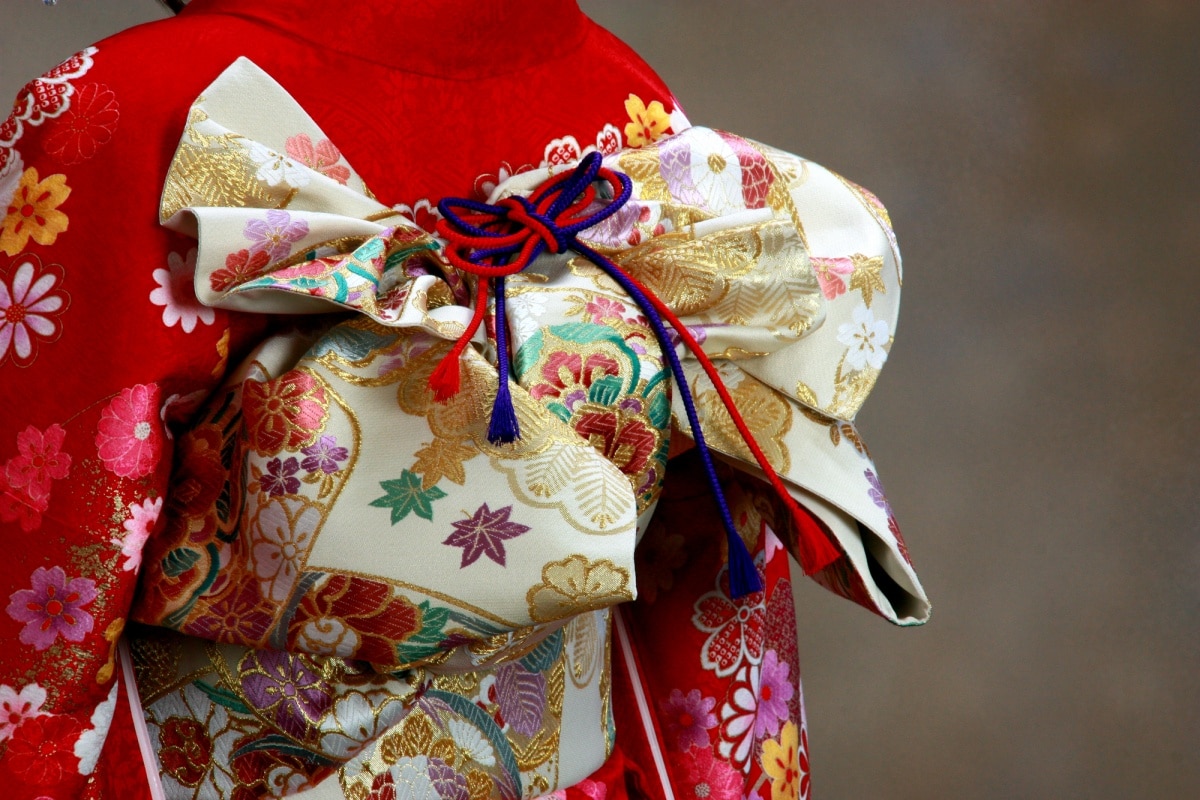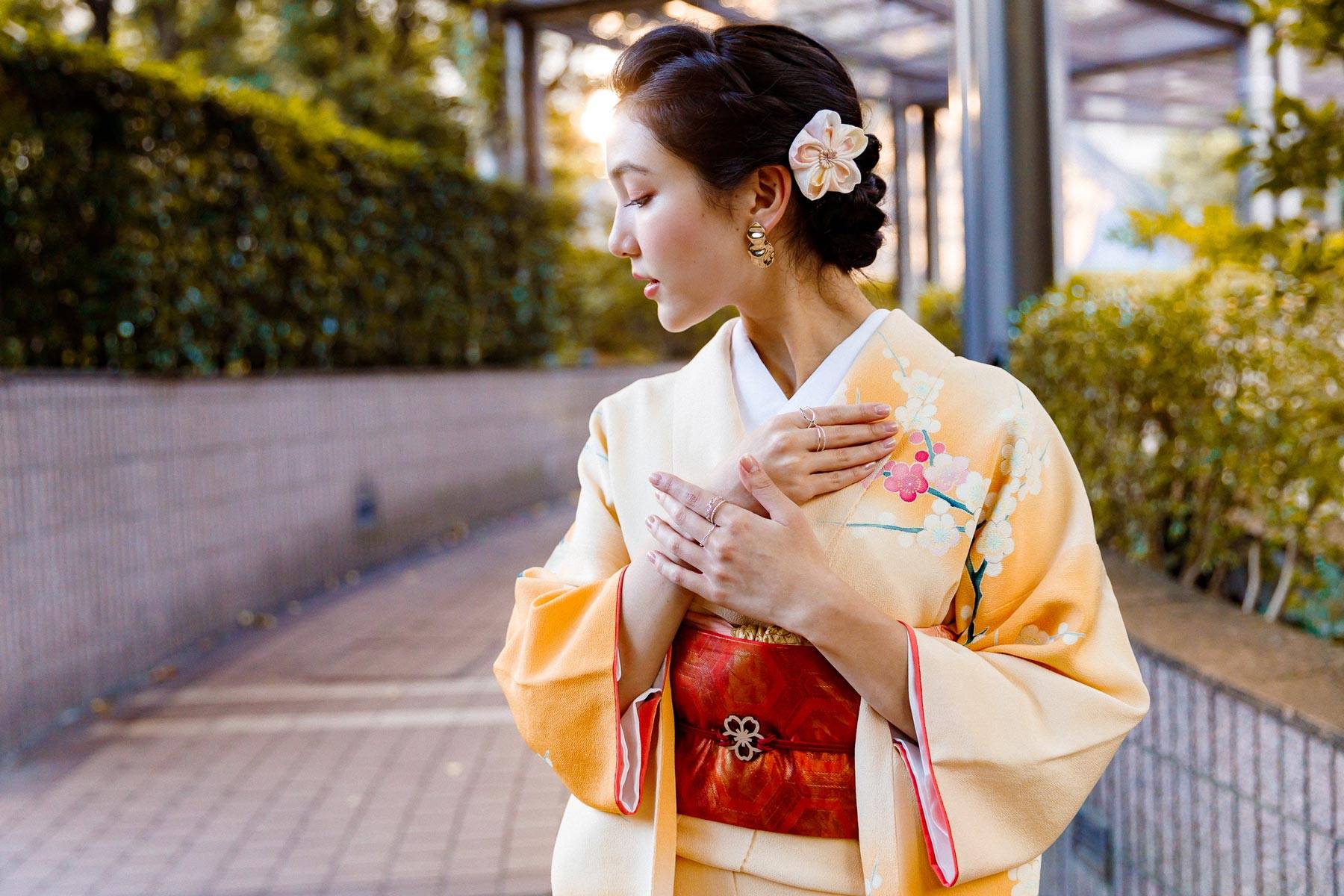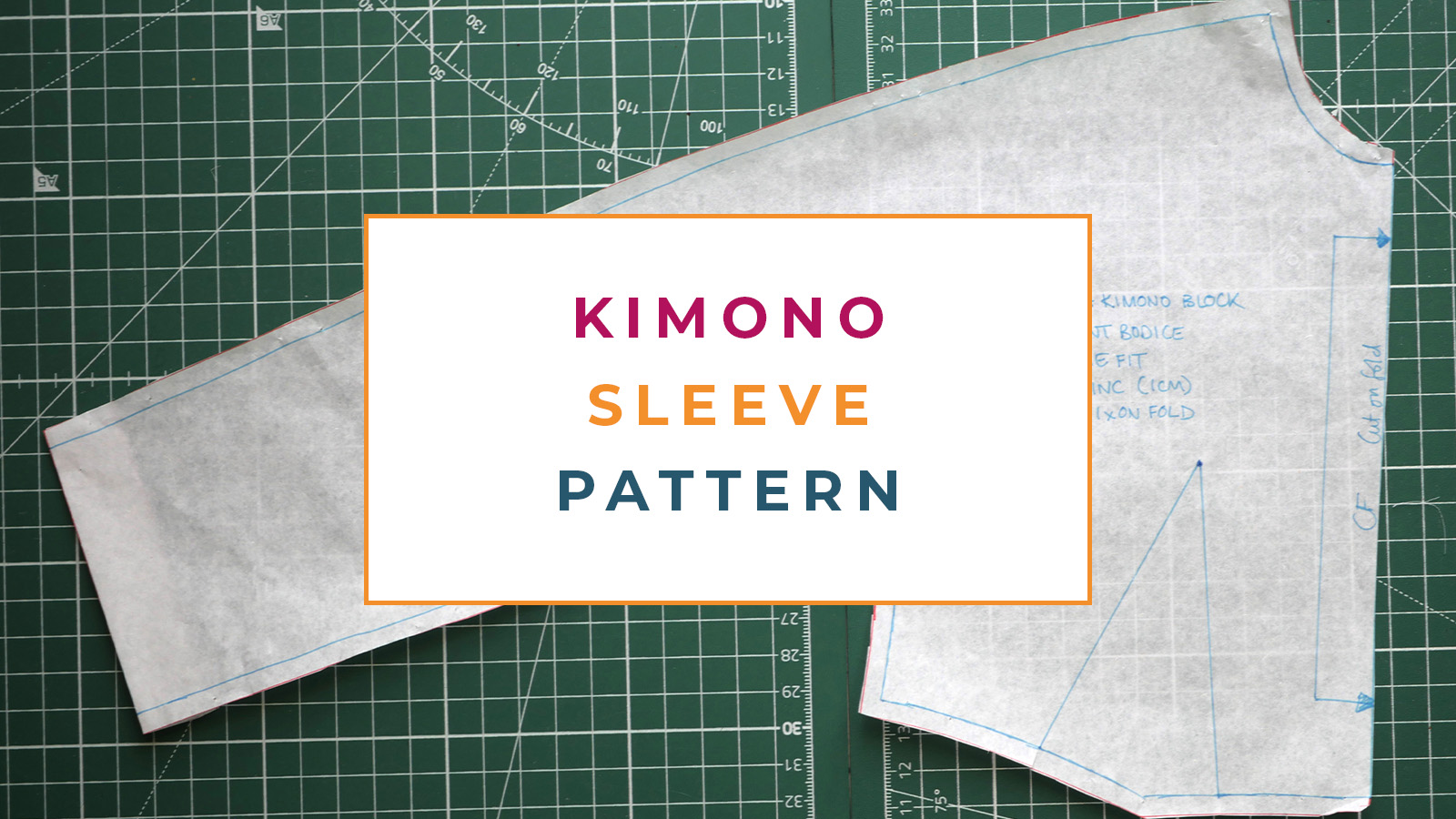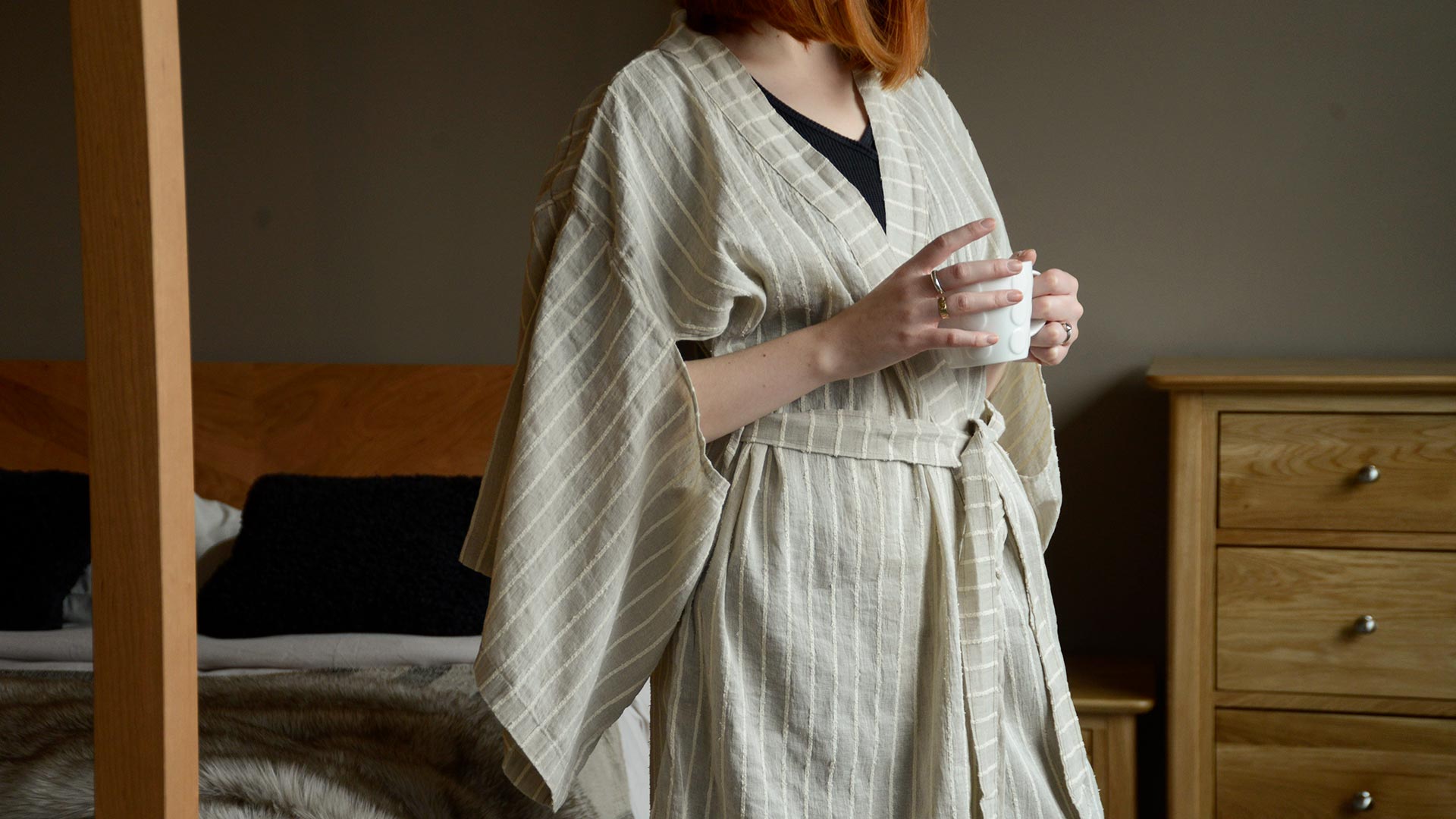Home>How-to Guides>For All>How To Wear Kimono


For All
How To Wear Kimono
Modified: September 23, 2023
Discover the art of wearing a kimono with our step-by-step guide. Whether it's for a special occasion or everyday wear, our tips are perfect for all fashion enthusiasts.
(Many of the links in this article redirect to a specific reviewed product. Your purchase of these products through affiliate links helps to generate commission for Under-tec.com, at no extra cost. Learn more)
Table of Contents
Introduction
The kimono, a traditional garment from Japan, has captivated people around the world with its elegance and timeless beauty. The word kimono, which translates to “thing to wear,” truly embodies the essence of this iconic attire. Steeped in history and culture, the kimono holds a significant place in Japanese society.
What sets the kimono apart from other clothing styles is its intricate design and attention to detail. Every aspect, from the fabric to the patterns, tells a story and reflects the wearer’s personality and status. Whether you’re attending a formal event, exploring the rich traditions of Japan, or simply appreciating its aesthetic appeal, wearing a kimono is a unique experience that allows you to embrace the beauty of Japanese culture.
In this article, we will take you on a journey to explore the world of kimono fashion. We will delve into its rich history, explore the different types of kimonos and traditional accessories, and guide you on how to select the perfect kimono for your body type. Additionally, we will provide step-by-step instructions on putting on a kimono and tying the obi, as well as offer styling tips for both traditional and modern ways to wear a kimono.
Moreover, we will uncover the cultural significance of the kimono and how it has evolved over time. From being a symbol of nobility and social status to a cherished clothing item for special occasions, the kimono holds a cherished place in Japanese hearts.
So, whether you’re an avid enthusiast of Japanese culture, a fashion lover seeking unique styles, or simply fascinated by the beauty of the kimono, join us as we dive into the art of wearing this iconic garment.
History of Kimono
The history of the kimono dates back thousands of years and is deeply rooted in Japanese culture. The origins of the kimono can be traced to the Heian period (794-1185), where it was initially influenced by Chinese clothing styles and materials. However, it was during the Muromachi period (1336-1573) that the kimono as we know it today began to take shape.
During this era, the kimono became more distinct in design and craftsmanship. It evolved from a simple garment into a work of art, with intricate patterns and motifs adorning the fabric. The styles and colors of kimonos also began to reflect the wearer’s social status and age, with vibrant colors and bold patterns often reserved for noble families and older individuals.
The Edo period (1603-1868) marked a significant turning point in kimono fashion. It was during this time that the ruling Tokugawa shogunate imposed strict social hierarchy and sumptuary laws. These laws dictated who could wear certain designs, fabrics, and colors, further emphasizing the kimono as a symbol of social status.
However, the Meiji period (1868-1912) brought about a shift in Japan’s cultural landscape, including changes in clothing styles. Influenced by Western fashion, many Japanese people started to adopt Western clothing, relegating the kimono to special occasions and traditional events.
Despite these changes, the kimono has managed to withstand the test of time and remains an important part of Japanese culture. Today, it is still worn during formal ceremonies, weddings, tea ceremonies, and other significant cultural events. It has also gained popularity internationally, with many people appreciating its beauty and incorporating it into their fashion choices.
The kimono is not just a piece of clothing; it is a symbol of tradition, craftsmanship, and cultural heritage. Its history serves as a reminder of Japan’s rich cultural past and the artistry that goes into creating such a beautiful and intricate garment.
Types of Kimono
The kimono comes in various styles, each with its own unique characteristics and purposes. Let’s explore some of the most common types of kimonos:
- Furisode: The furisode is a vibrant and highly formal kimono worn by young, unmarried women during traditional ceremonies and celebrations. Its defining feature is its long, flowing sleeves, which can measure up to 114 centimeters in length. The furisode is often adorned with intricate patterns and bright colors, making it a stunning masterpiece of art and design.
- Tomeshode: The tomeshode is a more subdued version of the furisode. It is typically worn by married or older women and features shorter sleeves. The tomeshode is often chosen for more formal occasions, such as weddings or important ceremonies.
- Houmongi: The houmongi is a versatile kimono that can be worn for various occasions, including weddings, parties, and tea ceremonies. It is characterized by a flowing design that wraps around the body, often featuring hand-painted or embroidered motifs. The houmongi offers a balance between elegance and understated beauty.
- Tomesode: The tomesode is a formal kimono primarily worn by married women during formal events. It has a solid black base with intricate patterns on the bottom half and sleeves. The number of family crests (known as mon) on the kimono varies depending on the wearer’s social status, with higher-ranking individuals having more crests.
- Iromuji: The iromuji is a versatile and semi-formal kimono suitable for a range of occasions. It is typically a solid color, allowing individuals to showcase their choice of obi (kimono belt) and accessories. The iromuji is often chosen for tea ceremonies, parties, or other cultural events.
- Komon: The komon is a casual and everyday kimono that features small, repeating patterns all over the garment. It offers a wide range of color choices and is often worn for outings, shopping, or casual social gatherings. The komon allows for personal expression and is a comfortable option for everyday wear.
These are just a few examples of the many types of kimonos available. Each type carries its own symbolism and significance, reflecting the occasion, social status, and personal style of the wearer. The diversity of kimono styles ensures that there is a suitable option for every event and individual.
Traditional Kimono Accessories
Completing the kimono ensemble involves more than just wearing the garment itself. Traditional kimono accessories play a crucial role in enhancing the overall look and adding cultural significance. Let’s explore some of the accessories commonly worn with a kimono:
- Obi: The obi is a wide belt that cinches the kimono at the waist. It not only provides structure but also serves as a fashion statement. Obis come in various colors, patterns, and materials, allowing wearers to personalize their kimono ensemble. The tying style of the obi can vary, ranging from a simple flat bow to intricate decorative knots.
- Obiage and Obijime: The obiage is a long, rectangular cloth that is worn underneath the obi. It adds a pop of color and helps secure and shape the obi. The obijime is a decorative cord that is wrapped around the obi, adding an additional layer of detail and style.
- Tabi Socks: Tabi socks are specially designed socks that have a separation between the big toe and the other toes. They are worn with traditional Japanese footwear, such as zori or geta. Tabi socks are an essential accessory to ensure comfort when wearing these types of shoes.
- Zori or Geta: Zori and geta are traditional Japanese footwear that are worn with a kimono. Zori are flat sandals made with rice straw or fabric, while geta are wooden sandals with a raised platform. The choice between zori and geta depends on the formality of the occasion.
- Kimono Innerwear: Underneath the kimono, various layers of innerwear are worn for comfort and proper fit. This includes a nagajuban (a type of under-kimono), han-juban (half-length under-kimono), and juban (an undergarment that covers the body). These innerwear pieces help protect the outer kimono and absorb perspiration.
- Hair Accessories: Traditional Japanese hair accessories, such as kanzashi, are often worn with a kimono. Kanzashi are decorative hairpins made from various materials, such as wood, metal, or fabric. They come in a variety of styles and designs, adding an elegant touch to the overall look.
These traditional kimono accessories not only serve functional purposes but also contribute to the overall aesthetic and cultural significance of the outfit. They offer an opportunity for personal expression and allow wearers to showcase their attention to detail and appreciation for Japanese craftsmanship.
Choosing the Right Kimono for Your Body Type
When it comes to choosing the perfect kimono, it’s important to consider your body type to ensure a flattering fit and enhance your overall appearance. Here are some tips to help you select the right kimono for your body type:
- Petite: If you have a petite frame, opt for kimonos with smaller patterns and less volume. Avoid kimonos with excessive fabric or long sleeves, as they may overwhelm your figure. Look for styles that create the illusion of length, such as vertical patterns or solid-colored kimonos with elongating lines.
- Curvy: For curvier individuals, choose kimonos that cinch at the waist to accentuate your figure. Obis that are wide and tied in a way that defines the waistline can create a slimming effect. Consider kimonos with subtle patterns or darker colors that can visually minimize certain areas while still highlighting your curves.
- Hourglass: If you have an hourglass figure, you’re in luck as the kimono style naturally complements your body shape. Emphasize your waist by opting for obis that cinch at the smallest part. Look for kimonos with patterns that flow along the natural curves of your body to enhance your silhouette.
- Rectangular: For those with a more rectangular body shape, consider kimonos with bold patterns, voluminous sleeves, and additional layers to create the illusion of curves. Experiment with various obi tying styles to add dimension and enhance the waistline. Avoid overly loose kimonos that may make you appear shapeless.
- Plus Size: If you’re plus-size, look for kimonos with a relaxed fit and ample room in the chest and waist areas. Choose fabrics with a drapey quality that flow gracefully over your curves. Darker colors and vertical patterns can provide a slimming effect. Avoid kimonos that are too tight or restrictive.
Remember, these are general guidelines, and ultimately, the most important aspect of choosing a kimono is to feel comfortable and confident. Experiment with different styles, colors, and patterns to find what suits you best. Don’t be afraid to seek advice from kimono experts or try on various options to see how they flatter your unique body shape.
By selecting a kimono that complements your body type, you can ensure that you look and feel your best when embracing the beauty of this timeless garment.
How to Put on a Kimono
Putting on a kimono may seem like a daunting task, but with practice and patience, it can become an enjoyable ritual. Follow these step-by-step instructions to put on your kimono:
- Put on the Nagajuban: Start by putting on the nagajuban, a type of under-kimono that acts as a base layer. Make sure the collar is folded neatly and the sleeves are adjusted properly.
- Wrap the Kimono: Hold the kimono with the left side overlapping the right side. Wrap the left side of the kimono across your body, and then fold the right side over it. Adjust the kimono to ensure it is smooth and evenly aligned.
- Secure with a Koshihimo: Use a koshihimo, a long, thin belt, to secure the kimono around your waist. Cross it over at the back and bring it to the front, tying a knot at the front of your waist. Make sure the kimono is snug but comfortable.
- Adjust the Length: Lift the excess fabric at the hemline and adjust it to the desired length. The ideal length should be just above the ankle for women and just below the ankle for men.
- Fix the Collar: Ensure that the collar is straight and even. Use a mirror or seek assistance to achieve the right alignment.
- Tie the Obi: Place the obi around your waist, making sure it sits tightly and securely. Tie it in a way that suits your style and the occasion. There are various tying methods, from a simple flat bow to decorative knots like taiko or hanhaba musubi.
- Adjust and Finishing Touches: Take a moment to adjust the kimono and obi, ensuring that everything is secure and properly aligned. Smooth out any wrinkles, adjust the sleeves, and fix the collar if needed. Complete your kimono ensemble with appropriate accessories, such as obijime, obiage, and kanzashi.
Remember, putting on a kimono can be a process that requires practice and attention to detail. Don’t be discouraged if it takes time to perfect the art of wearing a kimono. With each attempt, you’ll become more comfortable and confident in adorning this exquisite garment.
Seek guidance from experts or attend workshops to gain further insight and techniques. Embrace the beauty and elegance of the kimono as you immerse yourself in this timeless tradition.
Tying the Obi (Kimono Belt)
The obi, a wide belt that cinches the kimono at the waist, is not only a functional element but also a crucial part of the overall kimono ensemble. Tying the obi requires precision and technique. Here are some steps to help you tie your obi:
- Arrange the Obi: Start by unfolding the obi and holding it horizontally behind your back. Ensure that the front side of the obi is facing outward and the length of the obi is even on both sides.
- Wrap the Obi around your Waist: Bring the obi around your waist, positioning it at your natural waistline. Cross the obi over your stomach, with the right side over the left if you’re a woman, or the opposite if you’re a man.
- Make an Initial Knot: Cross the right side of the obi over the left, leaving a longer tail on the right. Bring the right tail up and over the left tail, creating a loop. Pass the right tail through the loop and pull it tight, forming a basic knot.
- Adjust the Obi: Adjust the obi so that it sits comfortably and evenly around your waist. Make sure it’s snug but not too tight or restrictive. Smooth out any wrinkles or unevenness in the obi fabric.
- Create the Decorative Knot: Take the longer tail of the obi and fold it in half to create a loop. Hold this loop in place with your left hand. Begin wrapping the shorter tail of the obi around the loop in a spiral motion, starting from the center and moving outward.
- Secure the Knot: Once you have wrapped the shorter tail completely around the loop, tuck the end of the tail under the wrapped section. Pull the longer tail down to adjust the tightness and shape of the knot. Ensure that the knot is centered and visually appealing.
- Final Adjustments: Take a moment to adjust the obi and its decorative knot. Smooth out any wrinkles or uneven areas, and ensure that the obi sits securely and comfortably on your waist. Make any necessary refinements to ensure the obi looks tidy and polished.
Remember, tying the obi may require practice and patience. Don’t be discouraged if it takes time to achieve the desired shape and tightness. As you become more familiar with tying the obi, you’ll develop your own unique style and techniques.
Don’t hesitate to seek guidance from experts, attend workshops, or watch tutorials for additional tips and tricks. Embrace the beauty and versatility of the obi as you complete your kimono ensemble, adding a touch of elegance and personal expression to your overall look.
Styling Tips for Wearing a Kimono
Wearing a kimono allows you to showcase your personal style while honoring the traditional Japanese garment. Here are some styling tips to help you create an authentic and visually stunning kimono ensemble:
- Choose Complementary Accessories: Select accessories that enhance and complement your kimono. Consider coordinating the colors and patterns of your obi, obijime, and obiage to create a cohesive look. Additionally, add traditional hair accessories, such as kanzashi or decorative pins, to complete your hairstyle.
- Experiment with Obi Knots: The obi knot is a focal point of the kimono ensemble, and different knot styles can completely transform the look. Explore various obi tying techniques, such as taiko musubi (drum knot) or bunko musubi (book knot), to add a touch of creativity and uniqueness to your outfit.
- Layer with Additional Kimono: For a more elaborate and lavish look, consider layering your kimono with additional pieces. This can include a haori (kimono jacket) or uchikake (wedding kimono). Layering adds depth and richness to your ensemble, creating a captivating visual effect.
- Play with Contrast: Experiment with contrasting colors and patterns to create visual interest. For example, pair a solid-colored kimono with a vibrant and patterned obi, or vice versa. Contrast can create a striking balance and draw attention to specific elements of your outfit.
- Mix Traditional and Modern Elements: Don’t be afraid to add modern touches to your kimono ensemble. Incorporate contemporary accessories or footwear, such as statement shoes or jewelry, to infuse your personal style and create a fusion of traditional and modern aesthetics.
- Highlight the Kimono’s Patterns: If your kimono has intricate patterns, choose understated accessories to allow the patterns to take center stage. Opt for a simple obi and minimalistic jewelry to let the beauty and artistry of the kimono fabric shine through.
- Pay Attention to Fit: Ensure that your kimono fits well and flatters your body shape. A properly fitting kimono will drape gracefully and enhance your silhouette. Tailoring or adjusting the kimono may be necessary to achieve the desired fit.
- Embrace Individuality: Ultimately, your kimono ensemble should reflect your unique personality and style. Feel free to experiment, mix-and-match patterns, and incorporate your personal flair. Express your individuality while still honoring the traditions and cultural significance of the kimono.
By incorporating these styling tips, you can create captivating and personalized kimono outfits that highlight both the beauty of the garment and your own personal style. Embrace the versatility and artistry of the kimono as you explore new combinations and express your creativity.
Modern Ways to Wear Kimono
While the kimono is deeply rooted in tradition, it has also found its place in modern fashion. People around the world have embraced the beauty and elegance of the kimono, incorporating it into their everyday wardrobe in contemporary and stylish ways. Here are some modern ways to wear a kimono:
- Layered Over Denim: Add a touch of Japanese flair to your casual outfits by layering a kimono over a simple jeans and t-shirt ensemble. The juxtaposition of the traditional kimono with modern denim creates a chic and eclectic look.
- Belted as a Dress: Transform your kimono into a stylish dress by cinching it at the waist with a belt. This creates a flattering silhouette and embraces the versatility of the garment. Pair it with heels or sandals for a sophisticated and contemporary look.
- As a Statement Jacket: Instead of a traditional coat or jacket, opt for a kimono as a unique outerwear piece. Pair it with trousers or a skirt and a simple top to let the kimono take center stage. This adds elegance and a touch of cultural flair to your everyday outfits.
- Styled with Modern Accessories: Pair your kimono with modern accessories, such as statement jewelry, a contemporary handbag, or trendy shoes. This juxtaposition of traditional and modern elements creates a visually captivating and fashion-forward look.
- As a Beach Cover-up: Take your kimono to the beach and use it as a stylish cover-up over your swimsuit. The lightweight and flowy nature of the kimono makes it perfect for a breezy beach day, while adding a touch of elegance to your resort wear.
- Two-Piece Set: Coordinate a kimono top with matching trousers or a skirt to create a stylish two-piece set. This modern twist on the traditional kimono ensemble creates a cohesive and fashionable look suitable for various occasions.
- Styled with Western Influences: Experiment with blending Japanese and Western fashion by pairing your kimono with elements like a graphic t-shirt, leather jacket, or sneakers. This fusion of styles creates an edgy and fashion-forward look that showcases your individuality.
Modern ways of wearing the kimono allow you to express your personal style while incorporating the timeless elegance of traditional Japanese fashion. Whether you choose to embrace a casual and contemporary look or create a unique fusion of styles, the kimono offers endless opportunities for modern and fashionable outfits.
Remember to have fun and experiment with different combinations to find the styles that resonate with you. Let the kimono be a statement piece that reflects your individuality and appreciation for the beauty of Japanese culture.
Cultural Significance of Kimono
The kimono holds immense cultural significance in Japan and is a symbol of the nation’s rich heritage and traditions. Its importance goes beyond being a mere piece of clothing and encompasses various aspects of Japanese culture. Here are some key cultural significances of the kimono:
- Tradition and Heritage: The kimono represents centuries of Japanese tradition and craftsmanship. It embodies the meticulous attention to detail, exquisite artistry, and reverence for nature that are integral to Japanese culture. The lineage of kimono production has been passed down through generations, preserving ancient techniques and ensuring the continuation of cultural heritage.
- Social Hierarchy and Status: Historically, the kimono was an indicator of social status and played a role in distinguishing different classes within Japanese society. The quality of the fabric, the complexity of the design, and the number and placement of family crests (known as mon) on the kimono reflected one’s rank and social standing.
- Seasonal Celebrations: The kimono is intricately connected to seasonal celebrations and festivities in Japan. Different types of kimonos are worn during specific times of the year to reflect the changing seasons and to pay homage to nature’s beauty. For example, vibrant and colorful kimonos with floral motifs are often worn during spring festivals, while subdued and earth-toned kimonos are favored during autumn.
- Rituals and Ceremonies: The kimono is an integral part of various traditional rituals and ceremonies in Japan. It is worn during tea ceremonies, weddings, coming-of-age ceremonies, and other significant cultural events. The kimono’s presence in these rituals not only adds an element of formality and tradition but also serves as a visual representation of respect and reverence for the occasion.
- Symbol of Japanese Identity: The kimono is synonymous with Japanese identity and is recognized worldwide as an iconic symbol of Japan. It represents the country’s aesthetic sensibilities, attention to detail, and dedication to craftsmanship. The kimono’s cultural significance transcends borders, making it a cherished piece of clothing celebrated and admired by people from different cultures around the globe.
- Continuity and Adaptation: While the kimono is deeply rooted in tradition, it has also adapted to fit modern times. Its evolution has allowed for contemporary interpretations and styles that cater to changing fashion preferences and lifestyles. This ability to adapt while maintaining its cultural integrity speaks to the resilience and longevity of the kimono as a cultural symbol.
The cultural significance of the kimono reflects the intricate relationship between Japan’s history, traditions, aesthetics, and sense of identity. It serves as a tangible link to the past and continues to be cherished as a representation of Japanese culture both within Japan and internationally.
Conclusion
The kimono is more than just a piece of clothing; it is a captivating embodiment of Japan’s rich culture and heritage. From its intricate designs and craftsmanship to its ability to adapt to modern fashion, the kimono holds immense significance in Japanese society and has captivated people around the world.
Through its long history, the kimono has evolved from a garment indicating social status to a cherished symbol of tradition and national identity. It is worn during important ceremonies, celebrations, and cultural events, showcasing the artistry and attention to detail that define Japanese craftsmanship.
Choosing the right kimono for your body type, putting it on with precision, tying the obi, and complementing the ensemble with accessories all contribute to the full cultural experience of wearing a kimono. In addition, modern interpretations of the kimono allow for creative styling, blending traditional elements with contemporary fashion to express personal style.
The kimono’s cultural significance extends beyond fashion, serving as a visual representation of Japan’s traditions, values, and connection with nature. It holds a sense of continuity between the past and the present, embodying the resilience and adaptability of Japanese culture.
Whether you are donning a kimono for a festive occasion, exploring its history and traditions, or incorporating it into your everyday outfits, embracing the beauty and elegance of the kimono is an opportunity to appreciate and engage with Japanese culture.
So, immerse yourself in the world of the kimono, embrace the artistry, and celebrate the cultural significance of this iconic garment. Wear it with grace, confidence, and a deep appreciation for the traditions it represents.
